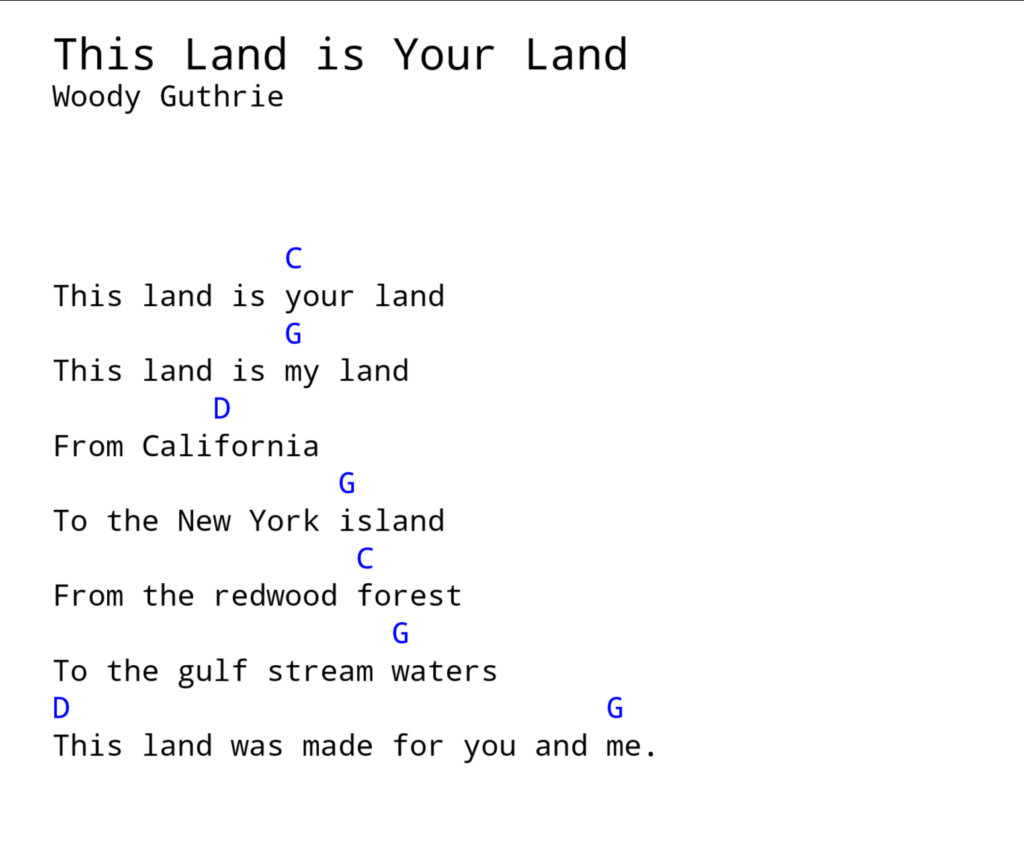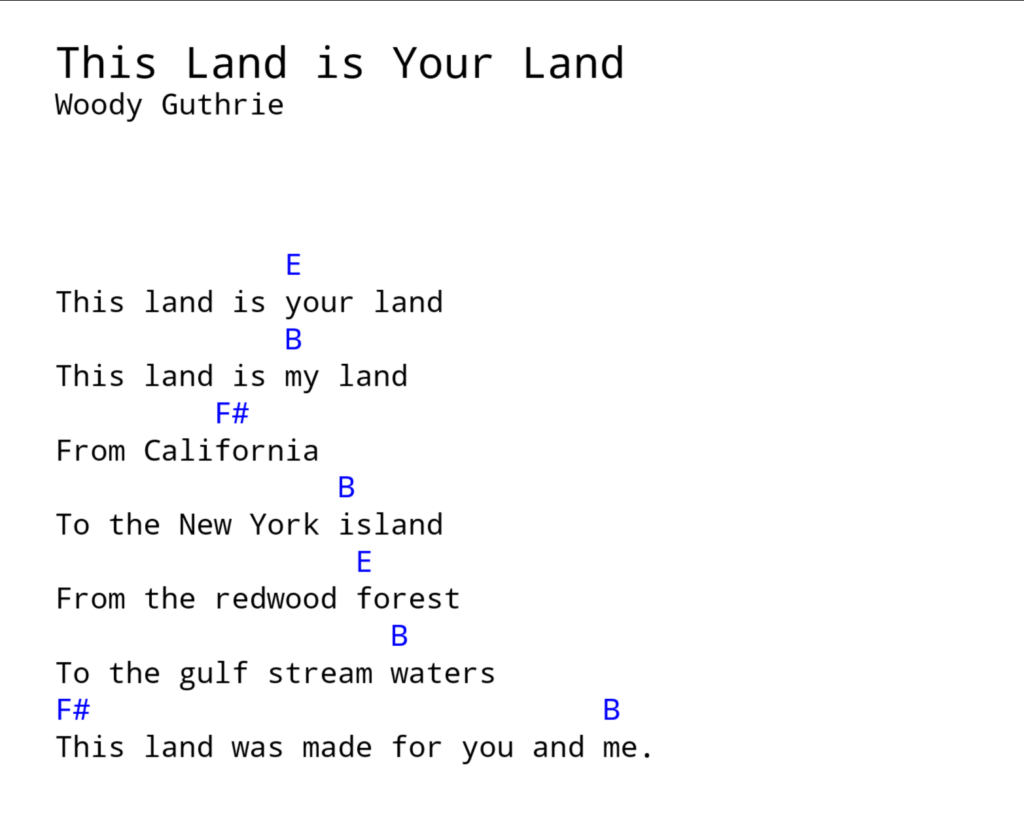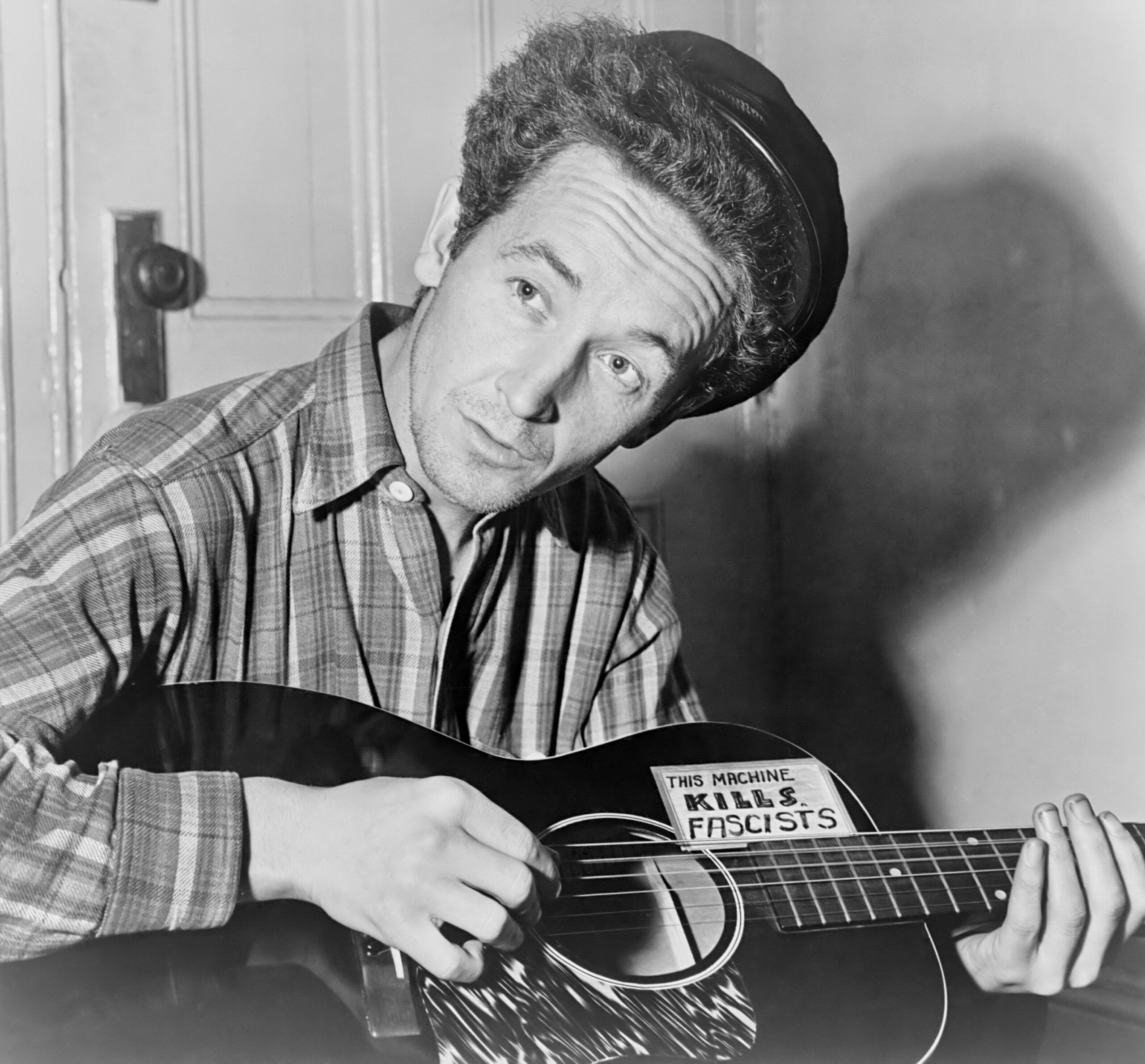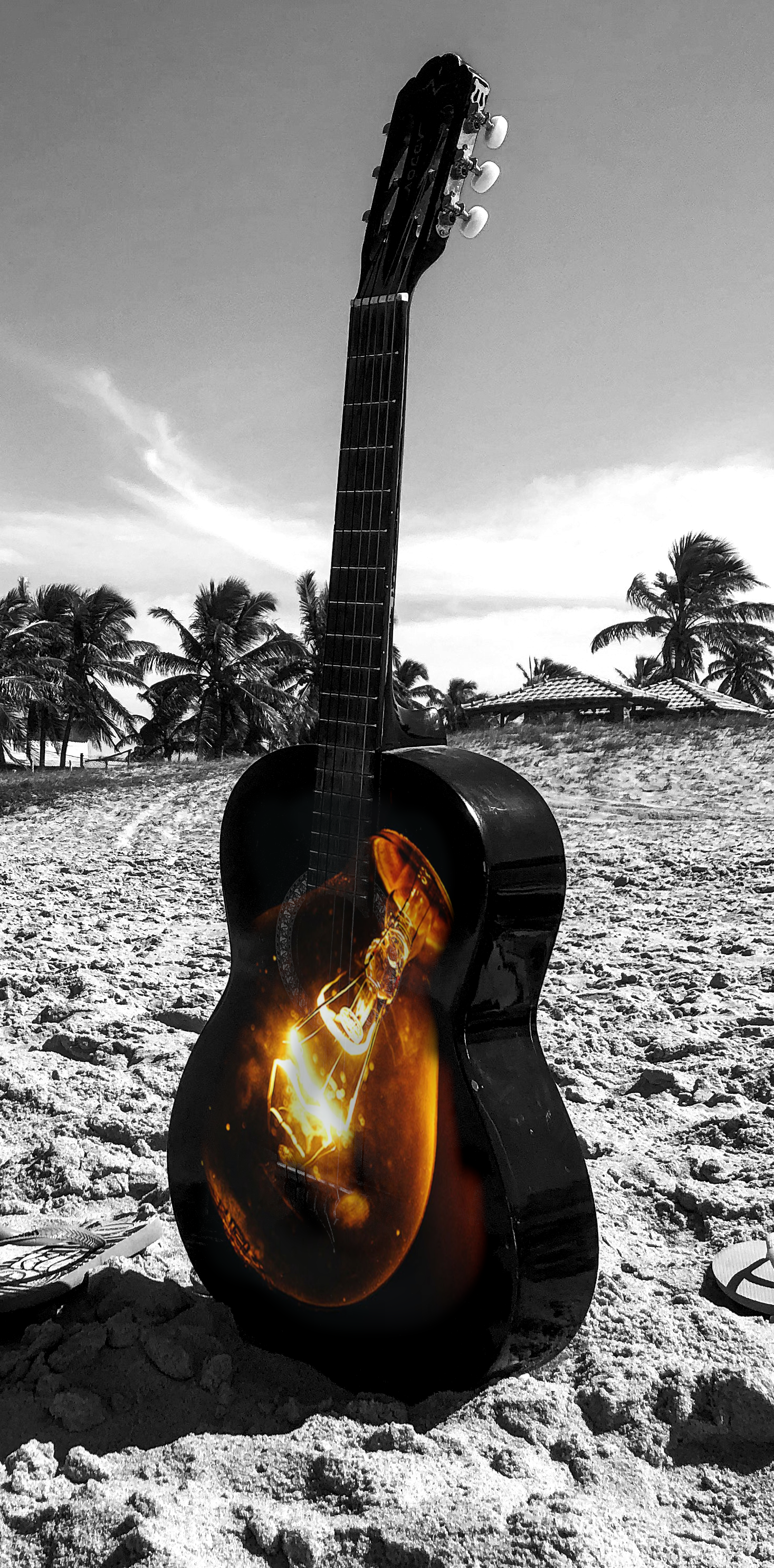Some guitarists prefer to learn and play songs in their original keys. There’s a lot to recommend that perspective, but what if your vocal range just doesn’t match up with the song in its original key? There’s a solution: transpose it!
To transpose a song is to move it from one key to another. We will be dipping into some music theory here, so hang on to your hats. The theory in this article is aimed at musicians who are new to these concepts.
Let’s work with Woody Guthrie’s classic tune “This Land is Your Land.”
Much of ImperfectGuitarist.com features blues music, but the music I first learned and loved was folk music. If you have four minutes to spare, this video is worth your time. It features a host of folk-singing powerhouses, most of whom are among my childhood heroes, performing “This Land is Your Land.”
You might be interested to know that in the early 2000’s, rock legend Bruce Springsteen caught on to the awesomeness that is folk music and was so taken that he made a whole album called The Seeger Sessions, named for folk music icon Pete Seeger. Here’s Springsteen’s version of This Land is Your Land.
transposing music without technology
Yes, there are some awesome apps that move songs from one key to another for you, but one day you’re going to find yourself in a situation with only your mind, your guitar, and a pen and paper handy, and you are going to be very glad you read this article. (You’re welcome.) The below method will work for any song, but it’s nice to work with a simple 1, 4, 5 to start with.
Here’s the chorus from “This Land is Your Land” in the key of G.

First, write out the musical alphabet for the key you’re playing in. We’re in the key of G so here’s what it looks like:
G A B C D E F# G
Let’s transpose it to the key of A. We’ll write the out the musical alphabet in the key of A directly under the letters we wrote for the key of G.
G A B C D E F# G A B C# D E F# G# A
Now you have your super-secret decoder key: every time you see a C in your original key, replace it with a D. Every time you see a G in your original key, replace it with an A. So the resulting sheet will look like this:

Let’s do another one. Say we want to move it to the key of B. (Yeah, it’s not that common a key for guitarists to choose, but hang with me here. This is for education.)
G A B C D E F# G B C# D# E F# G# A# B
The lyric sheet will now look like this:

I can hear the question transmitted from your mind, over the ethers, to my own noggin (your Internet connection must be pretty good): how do you know which sharps to use in a given key? One answer is to consult the Circle of Fifths. “Circle of Fifths” sounds either like an all-knowing secret society of musicians or, more likely, a lot of bottles of whiskey. It is neither. It is in fact a graphical device that shows the relationships between all the musical keys. Unfortunately, the circle of fifths is not all that easy to decipher, especially if you’re new to music theory. With that in mind I have made an alternative reference, “Ye Olde Boxye of Fyfths.”
Now you are empowered: go forth and transpose!




